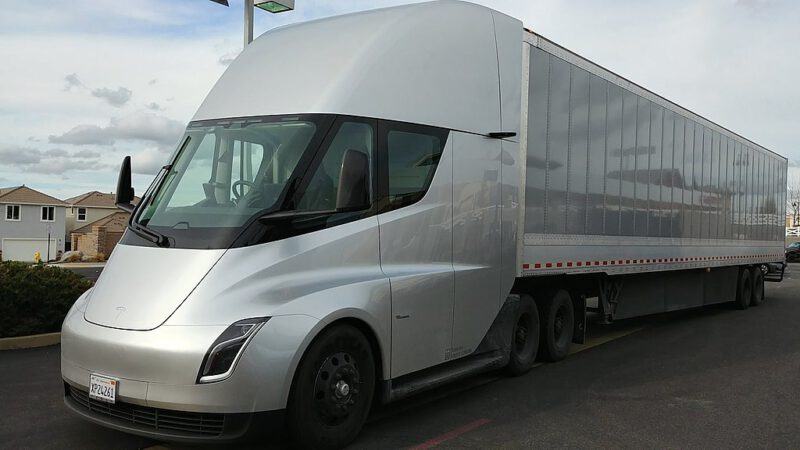Tesla is one of the modern pioneers of commercial electric vehicles (EVs). It’s one of the most accessible and well-known brands, even with the criticism surrounding the EV industry. Despite controversies about questionable charge times, lithium-ion battery recycling, and branding, Tesla keeps hitting milestone after milestone in its move toward a greener future.
Tesla sent its first semi-truck for an industry-shifting adventure in late 2022. Was the motivation behind this revolutionary vehicle to increase product offerings or make a more sustainable future that’s less reliant on fossil fuels?
What Milestone Did Tesla Hit?
Tesla has myriad projects, such as collaborating with solar panel providers with the Tesla Powerwall alongside its car manufacturing operations. It’s also been honing the first-ever Tesla Semi, which covered 500 miles in its test run. This vehicle weighs over 80,000 pounds, including cargo.
Tesla owners sometimes struggle to find charging stations or keep their vehicles at a reasonable power level. However, the Tesla Semi managed the journey in November 2022 in a single charge, transforming the potential for commercial fleets. When these become widely available, industrial transportation may not have an excuse not to make the electric transition. Pepsi is the first to operate the vehicles, as they received 100 new Tesla semi-trucks as part of a large-scale installation.
An electric semi capable of long hauls has been a dream for Tesla for over five years, but this experiment proved viable for the first time last fall. Companies have many questions, such as the ability for these to get mass-produced in a realistic time frame and how much they will cost.
What’s Special About the Tesla Semi-Truck Design?
The Tesla Semi has some familiar features car enthusiasts will recognize from its signature style. However, Tesla had to get creative with other practical design elements to ensure optimal efficiency.
The truck had to have a more thoughtful design than traditional semis to get the most out of a battery charge. The angles of the semi lessen drag’s impact on its speeds. Diesel semis have around a .70 drag coefficient, and the Tesla semi promises closer to .36 — saving companies over $200,000 in three years of driving per vehicle.
Tesla’s touted “beast” comes with a host of impressive specs that could improve the lives of drivers and the resilience of companies reliant on big rigs:
- Goes from zero to 60 mph in 20 seconds
- Uses less than 2 kWh a mile
- Includes three rear-axle motors so drivers can keep pace with traffic, improving road safety, even up hills
- Features innovative safety measures to improve traction and overall control
- Reaches 70% charge in 30 minutes
Additionally, Tesla assures fleet owners they will spend less on vehicle maintenance, keeping drivers on the road more consistently and bringing in more significant profits. There are fewer parts to maintain in EVs, so the remote diagnostics capabilities are another boon for operators.
Is It All Too Good to Be True?
Widespread EV adoption has sparked controversy in small communities and governmental legislation. An industry change to this scale has many advantages, but it comes with a few hurdles and drawbacks that might delay the full scope of the positive impact.
The first drawback is shipping delays. There is a learning curve as companies acclimate to electric semis — whether they’re Tesla-made or not. Truckers must adopt a new schedule based on charging times and realistic distances.
Companies will require new internal procedures to inform drivers how to maintain their vehicles or what to do when there’s a technical fault. Who do they call? What are they capable of doing by themselves? It’s hard to know if deliverables will arrive promptly as companies wade through these unknowns.
Another consideration is battery weight. Despite Tesla stating it could travel 500 miles on a full charge

with over 80,000 pounds, coverage didn’t clarify the truck’s base weight and how much of it was cargo. It also didn’t state how much the enormously heavy batteries were, and EV battery weight is one of the most prominent concerns in the sustainability conversation. The batteries could increase the average weight of semis by over 5,000 pounds, compromising what trucks could haul to clientele.
Why Did Tesla Create a Semi-Truck?
The amount of fuel used by diesel trucks is a massive worldwide contributor to greenhouse gas emissions and other adverse environmental side effects, like air pollution. Transportation accounts for 29% of the nation’s emissions in the U.S., where trucks and vans are the main offenders. Moving to an electric fleet would have one of the most notable positive impacts on the planet.
The Tesla semi-truck could be the answer to the sector’s safety concerns. Antiquated vehicles incapable of maintaining speed on steep grades and hauls with poor weight distribution are only a few of the issues that cause some of the highway’s most intense collisions, putting commuters and truckers in danger. Road safety improves with built-in sensors that help with stability, brake control, and tiredness by alerting drivers.
Tesla also needs the nation to expedite grid changes. The electric grid isn’t ready to handle an immediate transition to all-electric vehicles. Company buy-in to electric trucks could push grid retrofitting to happen sooner, including more EV charger accessibility. Cities may resist these expensive changes, though working with existing infrastructure can update transmission lines and chargers to handle the rise of EVs.
Another inarguable motivator could be competition. Tesla cannot wait to enter the big rig market because competitors, like Canoo, are already making strides in selling EVs to major corporations like Walmart. Tesla has a reputation to uphold. Even if its primary fleet vehicles come out a little later than the rest, it has to make up for lost time with meaningful innovations to sustain relevancy — like self-driving semis. The upfront investment might sound severe at an anticipated $150,000-$180,000 per truck, but the savings could have the semi pay for itself in no time.
Eliminating Diesel From Transportation Logistics
The Tesla semi-truck represents an ideal — a world without toxic transportation. The idea encapsulates the hopes of environmentalists and car manufacturers that embrace more eco-friendly mobility while achieving the cost savings that will entice companies to make the green shift.
The sector has a long way to go before the dream becomes a reality.










